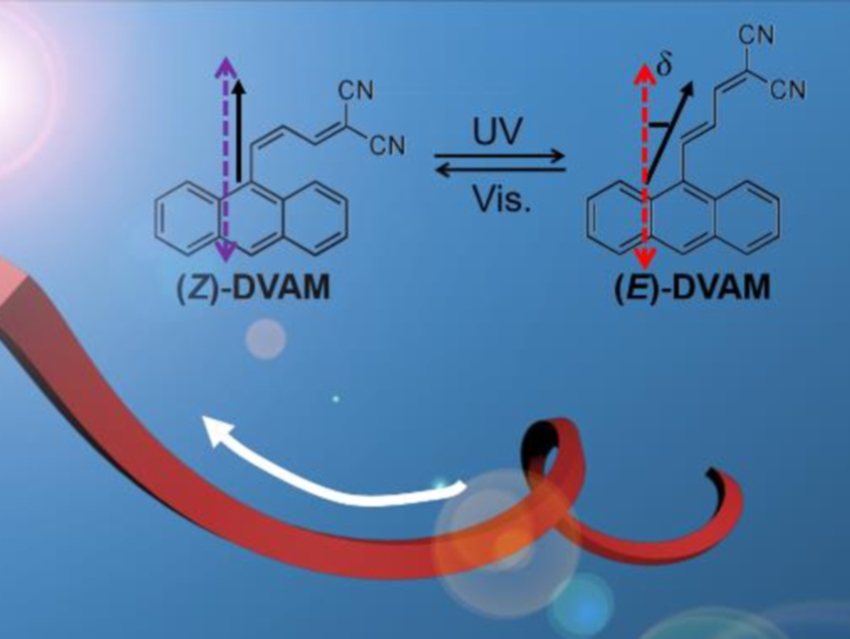Many living systems can transform chemical energy into mechanical motion. This can, for example, be achieved by cilia or flagella—wire‐like appendages that perform oscillatory motions like waving, bending, and spiraling. The development of artificial materials that mimic this function is challenging. Such artificial structures can be powered, e.g., by electric and magnetic fields or light.
Rabih O. Al‐Kaysi, Saud bin Abdulaziz University for Health Sciences and King Abdullah International Medical Research Center, Riyadh, Saudi Arabia, Christopher J. Bardeen, University of California, Riverside, USA, and colleagues have developed organic crystal microwires that mimic the movements of biological flagella when exposed to light. The team used an anthracene derivative, (E,Z)‐2‐(3‐(anthracen‐9‐yl)allylidene)malononitrile, or E/Z‐DVAM (pictured), which can undergo an E‐to‐Z photoisomerization reaction. This provides the ability to convert photons into molecular-scale motion. These molecules are assembled by precipitation from an aqueous surfactant solution to yield crystalline microwires with lengths of up to 1 mm.
When the microwires are exposed to a combination of ultraviolet and visible light, forward and reverse photoisomerization reactions in the wires drive continuous twisting and writhing motions. These motions can propel the wires through water, with speeds controlled by the light intensity. According to the researchers, the work could have, e.g., nanomedical applications.
- Light‐Powered Autonomous Flagella‐Like Motion of Molecular Crystal Microwires,
Christopher John Bardeen, Fei Tong, Daichi Kitagawa, Ibraheem Bushnak, Rabih O Al-Kaysi,
Angew. Chem. Int. Ed. 2020.
https://doi.org/10.1002/anie.202012417



![Synthesis of [c2]Daisy Chains via Mechanochemistry](https://www.chemistryviews.org/wp-content/uploads/2025/04/202504_RotaxanesWithSolidStateMechanochemistry-125x94.png)
